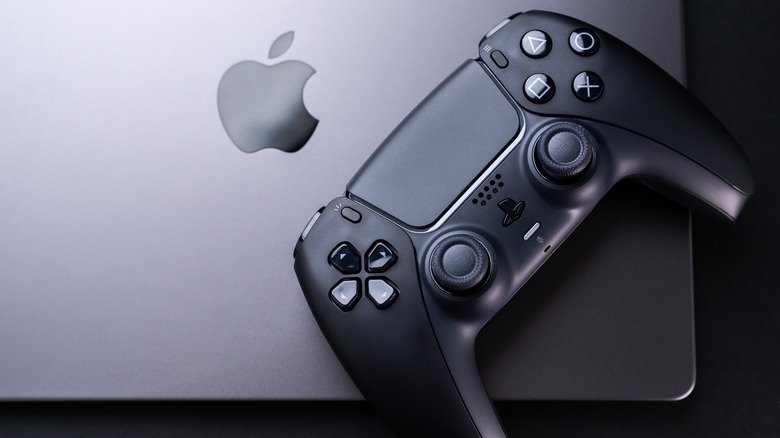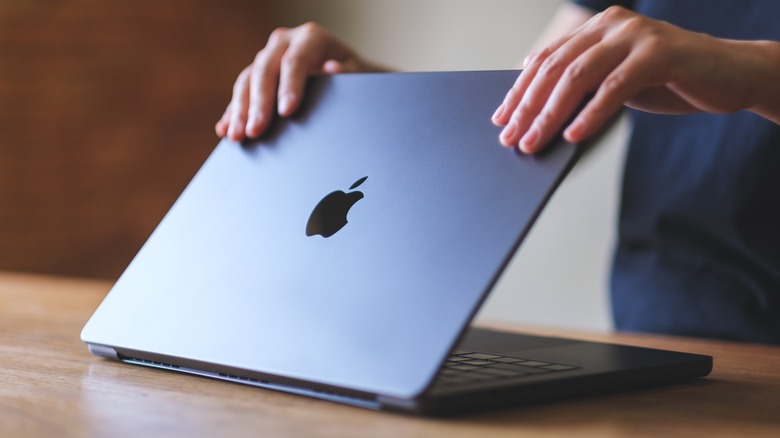Why Your MacBook's Fan Keeps Running (And How To Fix It)
While MacBooks are typically some of the quietest computers on the market, from time to time, they'll start making noise like a race car engine revving at the starting line. When this happens, you might notice your Mac is warm or even hot to the touch, which is almost always a sign that it's working hard to cool down. While a noisy fan can be annoying, it's usually not a reason for concern. Unless you own a Mac computer with Apple Silicon that operates without an internal fan, like the 2024 MacBook Air M3, there's a good chance you'll have to deal with a noisy fan at some point.
In fact, the increased activity of the fan could be normal if you're running resource-intensive applications like video editing software, or playing a game that pushes the limits of your Mac's CPU and GPU. In these situations, your Mac's fan will come on to ensure sufficient airflow and to keep it cool. The good news is that there are a few things you can do to figure out what's going on with your MacBook, and get its fan back to working as quietly as normal.
Common reasons your MacBook's fan keeps running
As well-designed as they are, MacBooks do come with some major limitations. When you start hearing excess noise from your MacBook's fan, it's often because you're engaged in multiple intensive tasks that require a lot of computing power. As you do this, your Mac's temperature will rise, setting off a chain reaction to get it down to a safe level. If your Mac is generating excess heat, its fan sensor will go off, and the fans will spin faster to dissipate the excess heat.
When you notice your Mac's fan making a lot of noise, pay attention to what you're doing. If you're doing something like compressing an HD video or playing a AAA game, that could be the cause. Keep in mind that in these cases, the fan is doing exactly what it should do to regulate your Mac's temperature. Another reason your fan could be running more than usual is because of a high ambient temperature or poor ventilation, both of which can cause your Mac to overheat.
Dust is a problem that doesn't usually come to mind when we think about a MacBook's fan running faster and louder than usual. However, a build-up of dust or other debris can clog your fan and keep it from working as it should. So, it's important to clean your MacBook regularly to keep this from happening. In some cases, malware can send your Mac's fan into high gear as it runs processes in the background that lead to increased CPU usage.
How to fix your MacBook's constantly running fan
If you're working in an area where the ambient temperature is high, lowering the temperature by opening the windows or moving to an air-conditioned space can help cool your Mac and stop the fans from running. You should also make sure that none of your Mac's vents are blocked to ensure air is circulating properly. Using your MacBook on a soft surface like a bed, lap, or pillow can also cause its fans to work more. When this happens, setting it on a hard surface like a table or desk will often solve the problem.
If none of these solutions work, it's time to move on to more advanced troubleshooting. If you're using an Intel-based Mac, resetting the System Management Controller (SMC), which is responsible for your Mac's thermal management, can help.
Follow these steps to reset your Intel-based MacBook's SMC:
- Shut down your Mac.
- Press and hold all of the following keys: Control (on the left side of your keyboard), Option (on the left), and Shift (on the right).
- After holding all three keys down for seven seconds, also press and hold down the Power button as well.
Apple Diagnostics can also help to identify problems with sensors or other components causing your fan to overwork. Follow these steps to run Apple Diagnostics on an Intel-based Mac:
- Turn on your Mac, then press and hold the D key as your Mac starts.
- When the progress bar appears or you're prompted to choose a language, release the D key.


